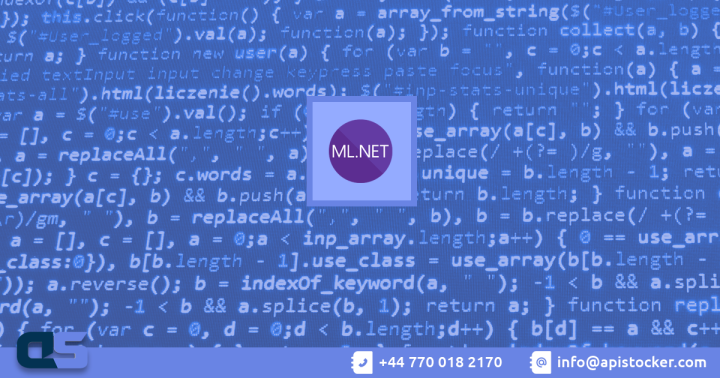ML.NET is a free software machine learning library for the C# and F# programming languages.[4][5][6] It also supports Python models when used together with NimbusML. The preview release of ML.NET included transforms for feature engineering like n-gram creation, and learners to handle binary classification, multi-class classification, and regression tasks.[7] Additional ML tasks like anomaly detection and recommendation systems have since been added, and other approaches like deep learning will be included in future versions.
ML.NET brings model-based Machine Learning analytic and prediction capabilities to existing .NET developers. The framework is built upon .NET Core and .NET Standard inheriting the ability to run cross-platform on Linux, Windows and macOS. Although the ML.NET framework is new, its origins began in 2002 as a Microsoft Research project named TMSN (text mining search and navigation) for use internally within Microsoft products. It was later renamed to TLC (the learning code) around 2011. ML.NET was derived from the TLC library and has largely surpassed its parent says Dr. James McCaffrey, Microsoft Research.
Developers can train a Machine Learning Model or reuse an existing Model by a 3rd party and run it on any environment offline. This means developers do not need to have a background in Data Science to use the framework. Support for the open-source Open Neural Network Exchange (ONNX) Deep Learning model format was introduced from build 0.3 in ML.NET. The release included other notable enhancements such as Factorization Machines, LightGBM, Ensembles, LightLDA transform and OVA.[11] The ML.NET integration of TensorFlow is enabled from the 0.5 release. Support for x86 & x64 applications was added to build 0.7 including enhanced recommendation capabilities with Matrix Factorization.[12] A full roadmap of planned features have been made available on the official GitHub repo.
The first stable 1.0 release of the framework was announced at Build (developer conference) 2019. It included the addition of a Model Builder tool and AutoML (Automated Machine Learning) capabilities.[14] Build 1.3.1 introduced a preview of Deep Neural Network training using C# bindings[15] for Tensorflow and a Database loader which enables model training on databases. The 1.4.0 preview added ML.NET scoring on ARM processors and Deep Neural Network training with GPU's for Windows and Linux.

